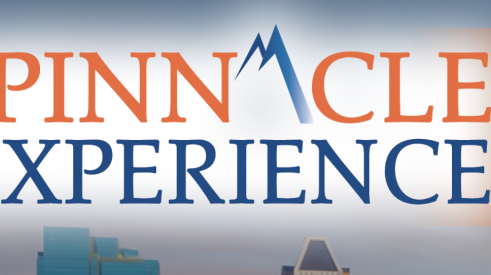Last year was a nervous year for managers at American Design & Build, in Bel Air, Md. The company is one of the few large roofing, siding, window, and sunroom operations in the U.S. to offer not only solar hot water systems, but solar electrical as well, among the products it sells and installs.
Company vice president Kevin Carmen says his concern mounted through the summer, adding up to “a very scary” situation by the fall. Behind the scare was the threat that Congress wouldn’t renew the 30 percent federal tax credit on solar, known as the Investment Tax Credit, or ITC.
With no other product to fall back on, company owners whose entire business is built on solar, such as Graeme Walker, of Texas-based Alba Energy, had even more to fear. Walker says that it wasn’t so much the prospect of having to change his business model as it was the uncertainty of whether or not Congress would actually extend the solar tax credit that was more trying than anything. If the credit went away, Walker could figure out how to market solar in some other manner. “If the industry knows on a certain day that everything ends,” says the Austin solar dealer, “we can plan for that.”
Political Football
As it turned out, on Dec. 18 Congress extended the ITC for three years from 2017 to 2019. In 2020, the credit drops to 26 percent, and 22 percent from 2021 on. That news was a huge relief for the solar industry.
You would have to get used to the touch-and-go nature of the politics that attaches to solar in order to sell the product. It’s part of what keeps many away from it. Mark Durrenberger, of New England Clean Energy, in Hudson, Mass., who publishes a well-regarded blog called The Energy Miser describes solar as “a complicated little business.” Homeowners often buy a new roof because they have to, and new windows or siding because what they currently have is faded, falling apart, or inefficient. But with power available from electricity-generating plants burning fossil fuels still being relatively inexpensive—and the source of at least 80 percent of the electricity consumed in the U.S. at the moment—spending upward of $25,000 on a rooftop solar array is, for most, a discretionary purchase. “Price is always the barrier,” says Jared Elliott, owner of Zero Energy Solutions, in Jacksonville, Fla. “They don’t understand that they are spending that money anyway.”
On Dec. 18, 2015, Congress extended the Investment Tax Credit for three years from 2017 to 2019. In 2020, the credit drops to 26 percent, and 22 percent from 2021 on.
Among the arguments marshaled by solar contractors is that homeowners can reduce their power bill and pay a lower cost per kilowatt-hour. But what has helped persuade homeowners to put up clean, renewable solar systems are the credits, rebates, and other incentives—such as the Solar Renewable Energy Certificates, or SRECs, that customers of New England Clean Energy can take advantage of in Massachusetts—that have helped bring the cost down and make it affordable.
For years, incentives have propelled solar growth, and those who’ve been in the industry for any length of time say that the homeowner who’s buying to save money is now a bigger factor than the environmentally aware buyer of years past, the early adopters.
Any company selling solar has to know and be able to explain not only the physics of how a rooftop system works, but how the ITC and local tax credits or utility rebates make it palatable for the homeowner’s budget and a smart investment that pays for itself in anywhere from five to 15 years, maybe more, depending on what’s available where you live.
Ongoing Back-and-Forth
A steady decrease in the price of components—a 72 percent drop in hard and soft costs during the last 10 years, according to Solar Energy Industries Association vice president of communications Dan Whitten—is one factor behind solar’s steady growth, which surged last year. So in many areas are those incentives, rebates, and credits.
But pushback from utility companies is also underway. Days after Congress extended the ITC in December, the Public Utilities Commission in Nevada—the state where solar was growing fastest—issued a ruling aimed at slowing the growth of solar there by all but eliminating net metering. Net metering is a system where a rooftop solar array is connected to the public utility power grid and whatever surplus it produces transfers to the grid, crediting the producer at retail electricity rates. The Nevada PUC reduced by three-quarters the credits it issues for excess energy generated by rooftop solar—that is, net metering—and tripled the fixed charges that power solar customers will pay, from $12.75 to $38.51 over a four year time period. The charges would be applied retroactively to the roughly 17,000 owners of rooftop solar systems in the state. For most homeowners thinking about solar in Nevada, the thought of solar panels on their rooftop quickly went away.
One factor behind solar’s steady growth: a 72 percent drop in hard and soft costs of components during the last 10 years
Within a month, the three largest solar companies in the state—SolarCity, Sunrun, and Vivint—announced that they were pulling out of Nevada, quitting sales and installation activities in that state. In the case of SolarCity, taking some 2,000 jobs with it. The issue is far from finished. Opponents of the action filed a class-action lawsuit in January, began mounting a ballot issue (disqualified at the court level on March 28), and mounted protests drawing thousands.
It’s hard to imagine any other home improvement that arouses this kind of politics and passion. The fear by solar advocates and installers is that the Nevada action will set a precedent that utility companies and regulatory bodies would follow in other parts of the U.S., where, unlike in other countries, regulation is local rather than federal.
For Jared Elliott in Florida, a former Merchant Marine engineer, a holistic approach toward “making the building as efficient as possible” reduces the risk of exclusively relying on solar, whatever kind of politics goes on with the solar industry. Renewables that he offers, such as solar, are “one of the more popular tools to do with building efficiency,” he says, and that approach, along with his promise of expert installation, makes for his appeal in an area with relatively few local incentives. Typically, Elliott says, a homeowner installing a solar power array in Jacksonville will see a 10-to-12-year payback period.
In Maryland, Kevin Carmen says that with state and county incentives coming on top of the ITC—Maryland is one of the more generous states for solar—homeowners can get a system that pays for itself in five to seven years. And now that the threat to take away the federal tax credit for solar has dissipated, at least for a while, the company has tripled its lead-generating efforts in solar. “It’s time to shine,” Carmen says. “Literally.”
Add new comment
Related Stories
Home Improvement Success: Luck, Hard Work, or Who You Know?
Even the most brilliant marketing mind could see fewer opportunities due to lack of networking
Homeowner Trends When Selecting Manufactured Stone
On this episode of Rock Stars of Remodeling, ProVia Product Manager of Stone & Roofing Chance Shalosky joins host Drew Barto to reveal design and color trends that contractors should consider when selling manufactured stone in 2024
Why A Successful Custom Remodeler Started a One-Day Bath Business
On this episode of Rock Stars of Remodeling, Showcase Remodels Owner Sam DeMaio shares why he decided to add a one-day bath business and offers tips on how contractors can accumulate wealth
Learn from the Best in Home Improvement and Remodeling
This year’s Pinnacle Experience aims to help remodelers stay ahead of their competitors by featuring captivating keynote speakers and subject matter experts, collaborative roundtable discussions, and networking with proven players from across the country.
Get the Most Out of Your Teams with This Leadership Style
The transformational leadership style focuses on inspiring and motivating team members to achieve their full potential and exceed their expectations
3 Reasons Contractors Should Set Same-Day Sales Appointments
Director of Home Improvement Drew Barto writes that contractors that aren't implementing same-day sales appointments are missing out on opportunities to close more business
Registration Open for The Pinnacle Experience 2024
Register today for The Pinnacle Experience 2024 in Baltimore from June 26-28. Join the best and brightest in home improvement and remodeling for insight, advice, and relationship-building that will help you take your business to new heights.
How Contractors Can Determine Lead Value
On this episode of Rock Stars of Remodeling, Builder Prime Founder and CEO Jonathan Weinberg reveals how contractors can effectively determine the value of each lead to their business, and why they must do so
24 Marketing Tips for Home Improvement Contractors in 2024
Quick-hitting advice on how contractors can increase and enhance lead flow in 2024
Rising Financing Fees to Impact Home Improvement Industry
NEWPRO Home Solutions COO shares his expert insight on the challenges facing the home improvement industry in 2024 for Pro Remodeler's Thought Leader predictions series












